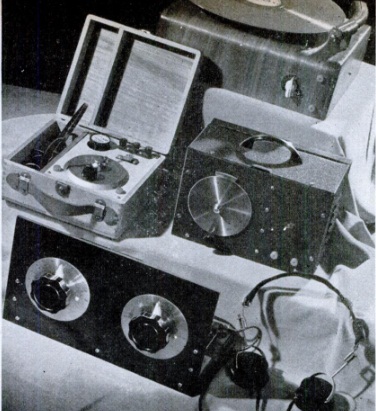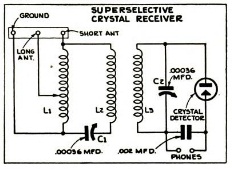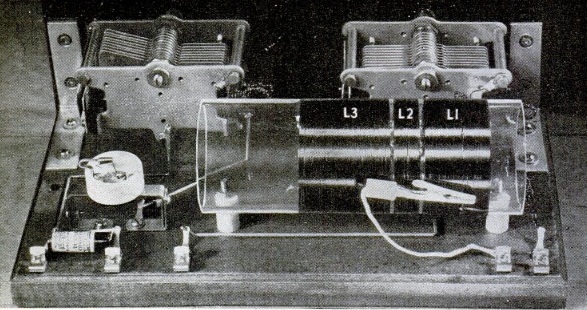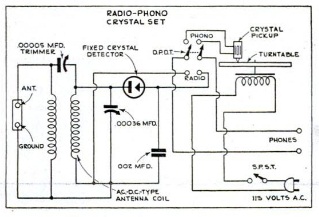
Crystal set radio-phono, top. Middle row, compact portable set, left, one-tube set, right. Super-selective crystal set, bottom.
Seventy years ago, the venerable crystal set was old technology, but as the February 1947 issue of Popular Science pointed out that beginners and experimenters who liked to do a lot with a little skill still could do a lot with a little piece of galena. It presented the four deluxe crystal sets shown above.
The first was a crystal set radio-phono combination. The phonograph relied on cutting edge technology. Instead of a galena crystal, it used a piezoelectric crystal as the phonograph pickup. This pickup had sufficient output to drive a set of headphones directly. In fact, in some cases, the volume might be too loud, requiring the substitution of a softer needle. The radio employed a 1N34 fixed crystal, which could be tucked away inside the cabinet since it required no adjustment. The plans shown here called for an electric motor, but the article points out that a spring-wound motor could be used, resulting in a radio-phono with no need for power.
 The second set, shown below, was a superselective model which allowed strong stations to be separated with the use of two tuned circuits.
The second set, shown below, was a superselective model which allowed strong stations to be separated with the use of two tuned circuits.

 The third set was the compact portable unit shown at the left, which made for an ideal travel companion. For use on camping trips, the article suggested bringing along a coil of wire and a metal stake that could be driven into the ground. To tune the entire broadcast band with one variable condenser, two sets of coils were needed, which could be wound on plug-in forms.
The third set was the compact portable unit shown at the left, which made for an ideal travel companion. For use on camping trips, the article suggested bringing along a coil of wire and a metal stake that could be driven into the ground. To tune the entire broadcast band with one variable condenser, two sets of coils were needed, which could be wound on plug-in forms.
The final set, shown below, was for areas with weaker signals, or for use with a loudspeaker with strong signals. In addition to the crystal detector, it included a 1A5GT tube serving as audio amplifier.



Pingback: The Floating Library | OneTubeRadio.com